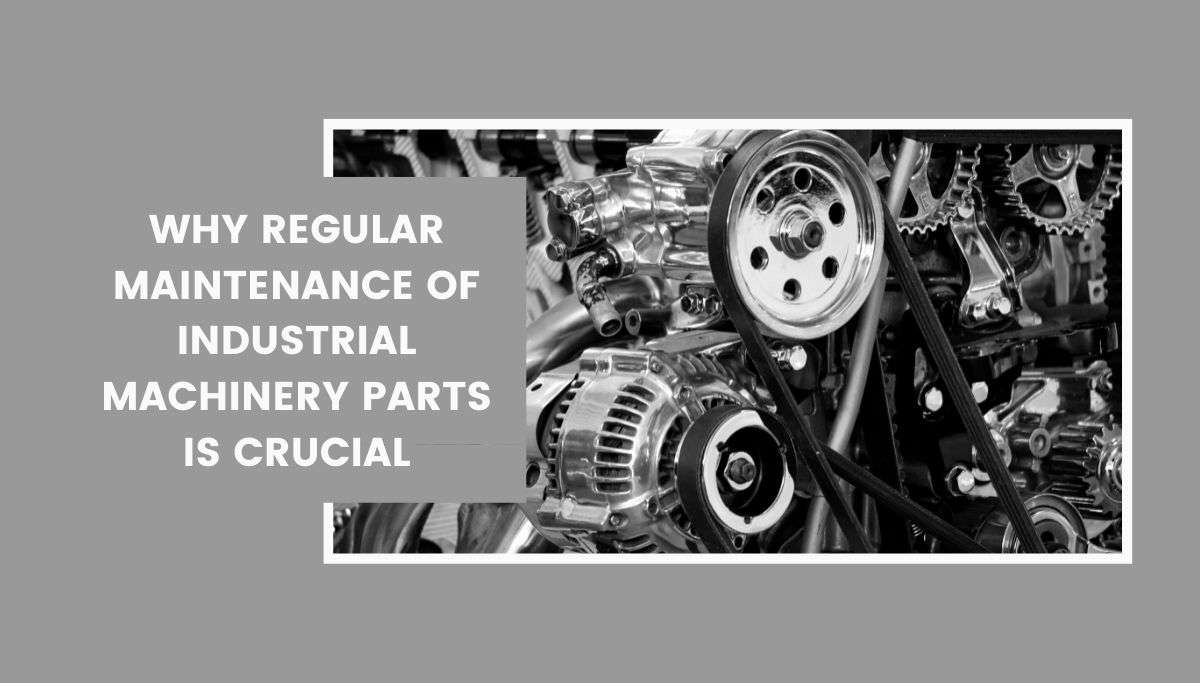
Oct 27,2023
Industrial machinery forms the backbone of modern manufacturing and production processes. From conveyor belts to CNC machines, these complex systems rely on a multitude of parts working together seamlessly.
But what keeps these mechanical giants in good working order? The answer lies in regular maintenance of industrial machinery parts.
In this blog post, we will delve into the world of industrial machinery maintenance, exploring why it is crucial, what parts require attention, key maintenance practices, and the role of technology in this vital process. By the end, you will have a comprehensive understanding of how regular maintenance can benefit your industrial operations.
Before we dive into the importance of maintenance, let's clarify what we mean by industrial machinery parts. These encompass all the components that make up a machine, including engines, bearings, hydraulics, electrical systems, and more. Each part plays a crucial role in the machinery's overall performance.
Modern industries heavily rely on industrial machinery for efficiency and productivity. These machines are at the heart of manufacturing, construction, and other sectors, driving the economy forward.
Regular maintenance is the practice of inspecting, cleaning, and repairing machinery parts at scheduled intervals. This upkeep ensures that the machinery functions optimally, reducing downtime and preventing costly breakdowns.
Regular maintenance significantly enhances the efficiency of industrial machinery. Parts that are well-maintained operate at their peak performance, leading to higher production rates and lower energy consumption. This translates to improved productivity and cost savings.
By addressing wear and tear through maintenance, industrial machinery's lifespan is extended. Preventing premature failure of critical components ensures that your investment in machinery pays off over the long term.
Neglecting maintenance may lead to costly repairs or replacements. Regular upkeep, on the other hand, is an investment that pays dividends by reducing overall operating costs.
Maintained machinery is inherently safer. Preventing malfunctions and breakdowns decreases the risk of accidents and injuries in the workplace, contributing to employee well-being and reducing potential legal liabilities.
To appreciate the importance of maintenance, it's essential to understand the parts that require attention. Here are some common industrial machinery components that benefit from regular maintenance:
Engines are the powerhouses of industrial machinery. Regular maintenance keeps them running smoothly and efficiently.
Bearings and shafts are critical for moving parts. Proper lubrication and alignment are key to their longevity.
Hydraulic and pneumatic systems play a significant role in various machinery. Regular maintenance ensures they operate without leaks or malfunctions.
Electrical components are integral to automation and control systems. Regular inspections prevent electrical failures.
These components are responsible for transmitting motion. Proper tension, lubrication, and alignment are essential for their functionality.
Filters and lubrication systems keep contaminants out and machinery running smoothly. Regular replacements and maintenance prevent system failures.
Maintaining industrial machinery involves several key practices:
Frequent inspections help identify issues before they escalate into major problems.
Cleaning and lubricating parts reduce friction and wear, extending their lifespan.
Proper tightening and alignment ensure that machinery operates as intended.
Worn or damaged parts must be replaced promptly to prevent further damage.
Calibrating and testing equipment ensures accurate and safe operation.
Maintenance should occur at various intervals to address different aspects of machinery upkeep:
Basic cleaning, lubrication, and visual inspections are performed daily to ensure the machinery is in working order.
Weekly maintenance involves more detailed inspections and potential adjustments.
Monthly maintenance focuses on specific components and systems that require periodic attention.
This maintenance level addresses more complex components and systems that need quarterly inspection and servicing.
Annual maintenance involves a comprehensive review of all machinery parts and systems to ensure optimal performance.
Choosing between genuine and aftermarket replacement parts is crucial. Genuine parts often come with manufacturer guarantees, while aftermarket parts may offer cost savings.
The choice of replacement parts can significantly impact machinery performance and lifespan. High-quality, genuine parts are usually a safer choice.
While genuine parts may be more expensive upfront, they can lead to cost savings in the long run by reducing the frequency of replacements and repairs.
Predictive maintenance uses data and technology to anticipate when maintenance is needed, reducing downtime and costs.
Condition monitoring involves real-time data analysis to identify potential issues and address them proactively.
The integration of the Internet of Things (IoT) and Industry 4.0 concepts is transforming maintenance by providing real-time data and remote monitoring capabilities.
Learn from examples of industries that suffered due to neglecting maintenance.
Assess your machinery's unique needs and requirements to establish an effective maintenance program.
Develop a comprehensive maintenance schedule that addresses daily, weekly, monthly, quarterly, and annual maintenance tasks.
Ensure that your maintenance personnel are well-trained and equipped to perform their tasks effectively.
Regular maintenance of industrial machinery parts is not merely a good practice; it is a fundamental necessity for any industry that relies on machinery. The benefits, including improved efficiency, prolonged lifespan, cost savings, and enhanced safety, cannot be overstated.
By embracing the latest technologies and understanding the specific needs of your machinery, you can ensure the longevity and reliability of your industrial operations. It's time for industries to prioritize maintenance and secure a brighter, more efficient future.